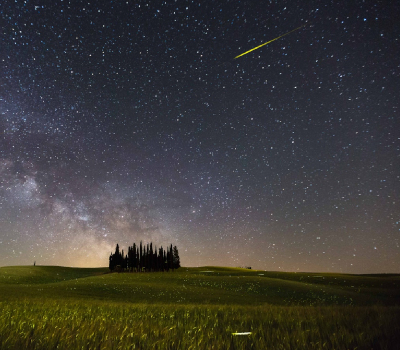

Or it can collide with our air, at least. When, by chance, such debris finds its orbital path intersecting with that of Earth, it can collide with us. The ones you see at random, called sporadic meteors, are tiny bits of rock or (more rarely) metal-shrapnel scattered from asteroids smashing into each other as they move around the sun. But meteors, of course, don’t actually originate in the air. The longer you look up, the better the odds are of spotting one.Ĭenturies ago no one knew what exactly they were the term “meteor” comes from the Greek for-literally, if somewhat vaguely-“ thing high up.” Many ancient observers assumed (correctly, to some extent) that shooting stars were atmospheric phenomena. Roughly a half-dozen can be seen every hour from a dark site anywhere on Earth, randomly appearing somewhere above your head and zipping across the sky. If you’ve spent much time under the night sky, chances are good that you’ve seen one, too. I’ve seen thousands of shooting stars, and each one has brought me just as much delight and wonder as the very first I witnessed as a kid. Look at the Stargazing pages for more information.The experience of that sudden flash and streak of light turning your head and catching your sight as it flares into existence and fades, all within a split second, never fails to elicit a gasp. Some comets take only a few years to swing around the sun and back into view. Halley's comet takes 75-76 years and will next be seen in 2061. Other comets appear once and disappear back into the galactic abyss - never to be seen again. They can be seen when they head inwards toward the Sun and form a distinctive flaming tail of gas and dust.

In fact comets are largely made up of ice and are so small and so very far away that we cannot see them, even in the biggest telescopes. The shower has been so amazing that in the past it looked like the glitter of falling snow!Īncient people were troubled by comets – these fiery orbs were said to bring bad luck or foretell disaster. The most famous “meteor storms” are linked with the Leonid shower, which takes place every year between 14 and 20 November. Occasionally, the sky is filled with shooting stars. There are about 20 main meteor showers a year, and some of them produce as many as 50 shooting stars a minute. As if especially for Wales, October’s Draconid meteor shower radiates from the fiery mouth of the northern constellation, Draco the Dragon, and fills the night sky with a fantastic display. Meteors can be seen at any time, but the best time to look for them is during periodic showers.Īt certain times of year as the Earth passes through clouds of space dust there will be amazing meteor showers and as many as 100 shooting stars can be seen in an hour! The most visible ones happen in August, October and December. If any part of the meteoroid survives burning up and actually hits the Earth, that remaining bit is then called a meteorite."Meteor" refers to the flash of light caused by the debris, not the debris itself. Meteors are commonly called falling stars or shooting stars. The short-lived trail of light the burning meteoroid produces is called a meteor. These amazing streaks of light you can sometimes see in the night sky are caused by tiny bits of dust and rock called meteoroids falling into the Earth's atmosphere and burning up. Gaze upwards on a clear night sky and you will eventually see a brief trail of light left by a shooting star. These bright streaks of light across the night sky are known as shooting stars. The trailing dust becomes meteors, and as these crash into the thin air of the Earth’s atmosphere the dust burns up. These comets leave trails of gas and dust behind them. There are several hundred comets that spend most of their lives flying among the planets of the inner Solar System. Looking up at these sky bound wonders connects your adventures on earth to the universe and its splendour. Shooting stars and comets embody the length and brevity of time and space in both their mystery and predictability.

There is romance in shooting stars and awe in watching comets. There is something magical about a shooting star as its brief final sparkle ends its epic voyage through the universe. On a clear night, gaze up at the sky for long enough and you will see shooting stars and maybe even spot a comet. On a clear night, gaze up at the sky for long enough and, you will see shooting stars and maybe even spot a comet.


 0 kommentar(er)
0 kommentar(er)
